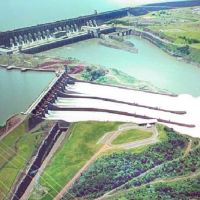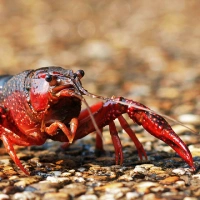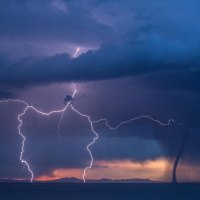The EU Biodiversity Strategy for 2030: five issues for the future of freshwater ecosystems

Earlier this week the European Commission published a new Biodiversity Strategy, designed to tackle the key drivers of biodiversity loss by 2030, both in Europe and globally. Released during the ongoing COVID-19 pandemic, the document is framed as a key element of the EU’s recovery plan – aiming to boost both ecological and economic resilience through policy and management.
Along with the linked Farm to Fork Strategy, the new EU Biodiversity Strategy for 2030 aims to designate at least 30% of European land and seas as protected areas, and to ensure that at least 10% of the continent’s agricultural land is managed as ‘high-diversity landscapes’ by 2030. Funding of around 20 billion per year has been designated to help meet this target, translated into policy through the ambitious EU Nature Restoration Plan.
Clearly, there is a lot in the Biodiversity Strategy to feel hopeful about. But what place do freshwater ecosystems have in its plans? We take a look at five key issues.
Land and sea: what about rivers, lakes and wetlands?
The Strategy sets out the ambitious goal that “at least 30% of the land and 30% of the sea should be protected in the EU. This is a minimum of an extra 4% for land and 19% for sea areas as compared to today.” Additionally, it states that a third of this protected area network should be “strictly protected.”
You might be forgiven for thinking: what about freshwaters? The good news is that freshwater ecosystems are addressed in the document, but it’s a puzzling use of language to exclude them from this discussion. Whilst we know that freshwater ecosystems are closely linked to their terrestrial neighbours, they have unique ecological processes and biodiversity, and require specific protected area design and management, often across national and biogeographic boundaries. Perhaps ‘land, freshwater and sea’ would be more appropriate in the future?

Restoring 25,000km of free-flowing rivers, floodplains and wetlands
The headline policy for freshwaters in the Strategy is the aim to restore more than 25,000km of free-flowing rivers – and their linked floodplains and wetlands – across Europe by 2030. A key element of this plan is to remove or modify obsolete barriers and dams in rivers, which can impede the movement of migratory fish, alter water flows, and impact the movement of sediments and nutrients along river networks.
The Strategy states that technical guidance and support will be provided to EU Member States in 2021, along with help with mobilising funding. The document states that barrier and dam removal will be undertaken with an awareness of the needs for hydropower generation, flood management, water supply, agriculture and navigability on many rivers.

The Biodiversity Strategy and the Water Framework Directive: an uncertain future?
The Strategy frames this large-scale restoration of European rivers, along with the need to review and reduce water abstraction, as a means of achieving the goals of the existing EU Water Framework Directive. The overall WFD goal, it states, is to “achieve good status or potential of all surface waters and good status of all groundwater by 2027.”
However, the future of the WFD is not explicitly addressed. The Strategy states that “the EU’s legal framework on water is ambitious but implementation is lagging behind and enforcement must be stepped up.” Whilst it references recent WFD ‘fitness checks’ – which concluded that the Directive is broadly fit for purpose, but needs better implementation – the Strategy does not explicitly rule out any future modifications.
“Unfortunately, the Commission failed to exclude a revision of the Water Framework Directive in the new strategy, despite its own evaluation saying the Directive is fit for purpose, and this has left Europe’s water policy in limbo,” says Eva Hernandez WWF Lead Living European Rivers Initiative.

Encouraging environmentally-friendly agriculture
Agriculture is a key driver of freshwater ecosystem decline and biodiversity loss in Europe. The Biodiversity Strategy – and the linked Farm to Fork Strategy – set out a number of goals to manage and mitigate its effects on freshwater life. First, the Strategies aim to reduce by 50% the overall use of chemical pesticides by 2030, and reduce by 50% the use of more hazardous pesticides by 2030. This goal will be supported by implementation of the EU Pollinators initiative. Second, the Strategies outline the need to manage at least 10% of Europe’s agricultural land as ‘high-diversity landscapes’. Such landscapes include riparian buffer strips, rotational or non-rotational fallow land, hedges, and ponds, and can help reduce agricultural pollution and soil erosion, and mitigate the effects of ongoing climate change.
Third, the Strategies aim for a goal of “zero pollution from nitrogen and phosphorous flows from fertilisers”, achieved through reducing nutrient losses by at least 50%, and reducing the use of fertilisers by at least 20%. This will result in a new Integrated Nutrient Management Action Plan in 2022. Linked to this, they outline that at least 25% of EU agricultural land must be organically farmed by 2030, potentially resulting in significant reductions in fertiliser and pesticide use across the continent.
Finally, the Strategies outline the need to protect and enhance European soils. A key element of this goal is to reduce soil erosion, which can significantly alter the course, flow and habitat quality of many freshwater ecosystems. This will be achieved through an update of the EU Soil Thematic Strategy in 2021, the Strategies state.

Climate change mitigation: protecting carbon-rich wetlands
Improving Europe’s climate change mitigation is a theme running through the Biodiversity Strategy. One element of this is to protect and expand European forests, achieved in part through the EU Forest Strategy (due in 2021), which aims to plant more than 3 billion trees across the continent by 2030. In addition to potentially helping mitigate climate change, forests are important to many freshwater ecosystems, providing habitat, nutrients and shade, and reducing soil erosion and buffering pollutants.
Freshwaters are also a key element of the climate change mitigation plan set out in the Strategy. The document calls for “significant areas of other carbon-rich ecosystems, such as peatlands, grasslands, wetlands, mangroves and seagrass meadows” to be “strictly protected” in the expanded protected area network it proposes. In addition to their role as carbon stores, these ecosystems are often crucial for freshwater biodiversity, and can play a significant role in natural flood management.
+++
Read The EU Biodiversity Strategy for 2030
Read A Farm to Fork Strategy for a fair, healthy and environmentally-friendly food system















Comments are closed.